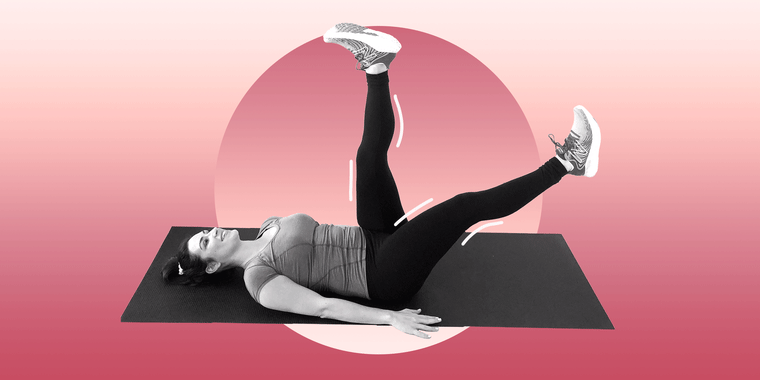The scissor kick — also referred to as a flutter kick — is a move that works both the abs and lower body. While it's an effective move that targets multiple muscle groups at once, it also requires a significant amount of core strength to perform correctly. Many people fall into the trap of recruiting their low back to help them complete the move, but learning proper form will help you avoid this common mistake and put the right muscles to work.
Here's everything you need to know to perform the exercise correctly.
What do scissor kicks do for the body?
Scissor kicks, like most other core exercises, help with stabilization as well as balance and control of the body. Research shows that core stability is important when it comes to everyday movement and injury prevention.
More specifically, scissor kicks target your abs, glutes, quads and hips. The move requires you to use your core to move your legs up and down in a controlled movement and this skill can be transferred to simple everyday activities like picking up a laundry basket or gardening outside.
The common mistakes people make when doing scissor kicks
Like most other exercises that target the core, mastering the scissor kick requires keeping your abs constantly engaged throughout the move. Not engaging the core properly is the number one mistake I see people make when performing scissor kicks. Arching of the back may make the move feel easier on the abs, but it strains the back and devalues the effectiveness of the move.
I also see some of my clients moving their bodies too much when performing scissor kicks. A lot of people end up moving their arms to increase momentum, but this actually decreases stability and balance. It’s also common to begin picking up the pace with which you move your legs up and down, but this often does more harm than good. Keep these tips in mind:
- Don’t arch your back. Remember to keep your core engaged and your back pressing into the floor.
- Keep your arms still throughout the move for more stability.
- Don’t pick up the pace too much. The movement should be slow and controlled; focus on the core, not quickening the pace of the legs.
How to do a modified scissor kick
Modified scissor kicks are actually not much different from the full exercise, making the transition from one to the other pretty simple. What makes the scissor kick difficult is the amount of leg movement and the angle of the legs. So to decrease the difficulty of the move, keep them closer to the 90-degree angle we start in (instead of moving them closer to the floor) and move your legs a shorter distance up and down.
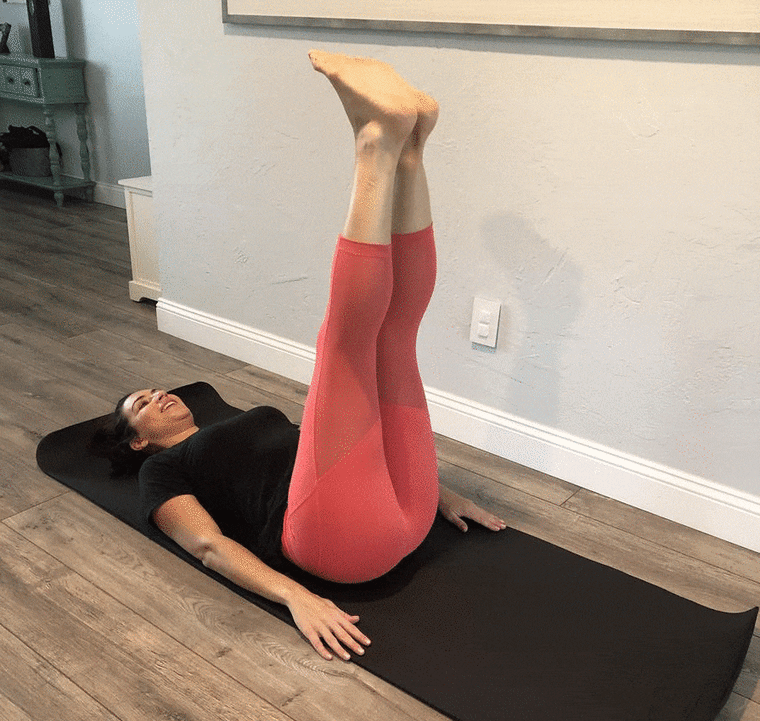
If you’re looking for a modification, I recommend starting with your legs straight up towards the ceiling. Use your abs to slowly lower your legs only slightly lower than a 90-degree angle. Flutter your legs up and down slowly, keeping the distance small.
How to perform scissor kicks correctly
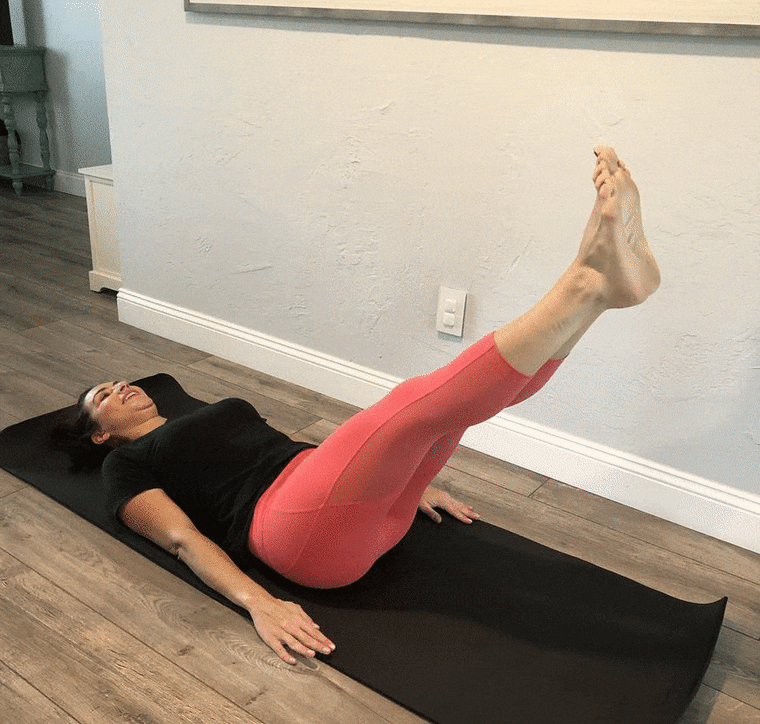
Because performing a scissor kick correctly requires you to maintain a strong core throughout the entire exercise, I recommend starting with the modification. Slowly increase the angle of your legs while also steadily increasing the distance that you move your legs up and down toward the mat. This will ensure that you have the core strength required to keep your back pressed into the mat. Follow these steps if you’re ready to take on scissor kicks:
- Lie on your back with your legs straight up toward the ceiling.
- Let your arms rest down at your sides. You can also place your hands under your butt for increased stabilization.
- Squeeze your core and lower both of your legs 6-12 inches down to about a 45-degree angle.
- Lift one leg up as your lower the other to the floor. Switch legs. Continue to alternate, moving your legs in a flutter motion.
- Repeat for about 15 repetitions, and make sure not to speed up as you go.
4 exercises that will help you perform scissor kicks better
These four moves will help strengthen the muscles that will support you when performing scissor kicks.
Leg raises
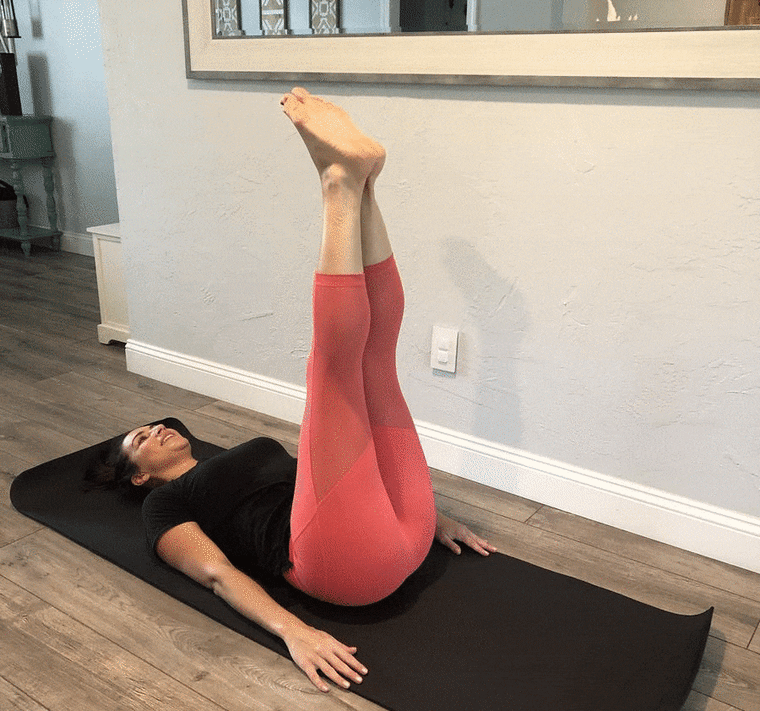
Leg raises are similar to scissor kicks, however, keeping your legs together instead of moving them individually makes it easier to lower and raise them. Begin in the same starting position as the scissor kick, with your legs straight up toward the ceiling. Slowly lower them in a controlled manner squeezing your core until your feet are hovering about six inches above the mat. Hold this position for 30 seconds, and remember not to arch your back! If you feel your back arching, raise your legs back up slightly toward the ceiling until you find the angle at which you can hold for 30 seconds while keeping your back on the mat.
Bicycle crunch
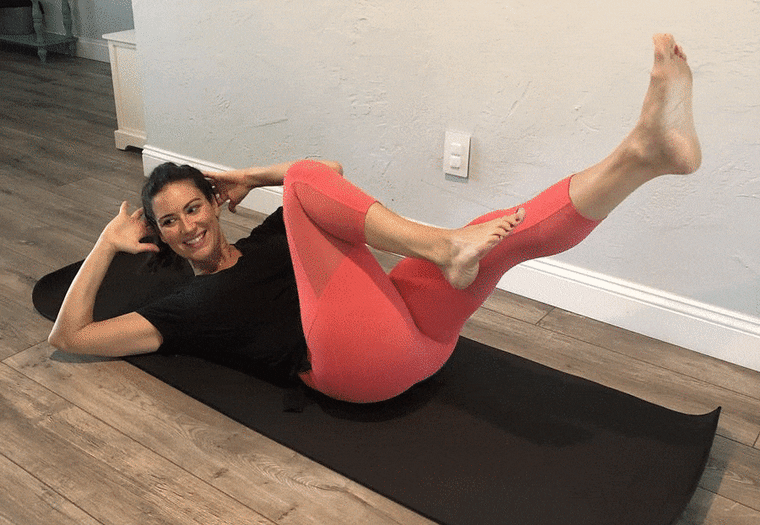
Lie on the floor with your legs straight out in front of you and your elbows bent with your hands behind your head. Engaging your core, lift your legs and upper back off the floor. Then, keep your right leg straight as you bring your left knee towards your right elbow. Alternate sides, focusing on your obliques and rectus abdominis.
Reverse crunch
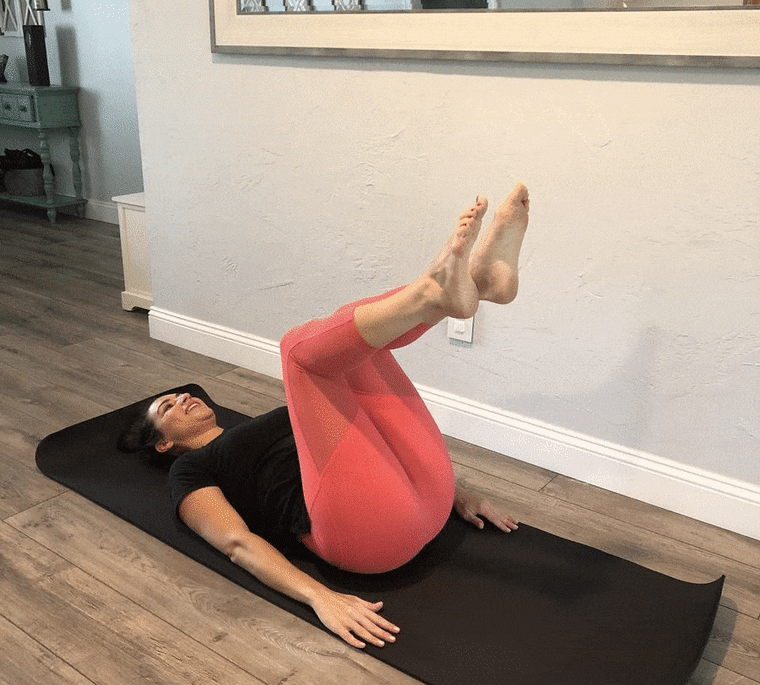
Lie on your back with your legs lifted into a table-top position. Then, bring your knees into your chest, lifting your hips off the ground while keeping your knees bent. Make sure not to use momentum when bringing your legs toward your chest; instead focus on crunching the low abs to lift your hips off the ground.
Plank

Lie down on your stomach, looking down at your mat, with your hands under your shoulders. Squeeze your abs and keep your legs together as your press your body off the floor into a plank position, supporting your weight on your toes and palms. Pull your belly button to your spine to ensure proper core engagement, and hold for 30 seconds.
